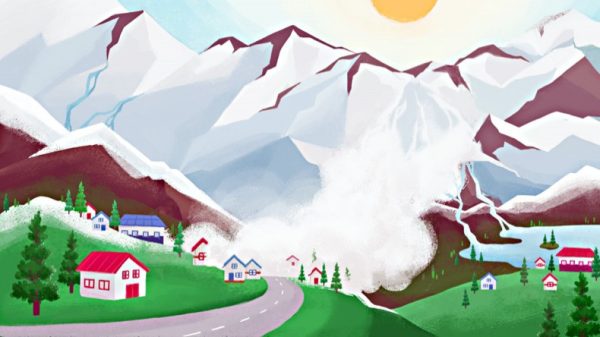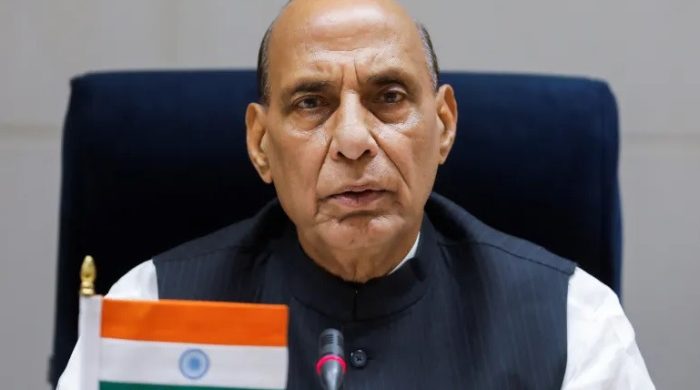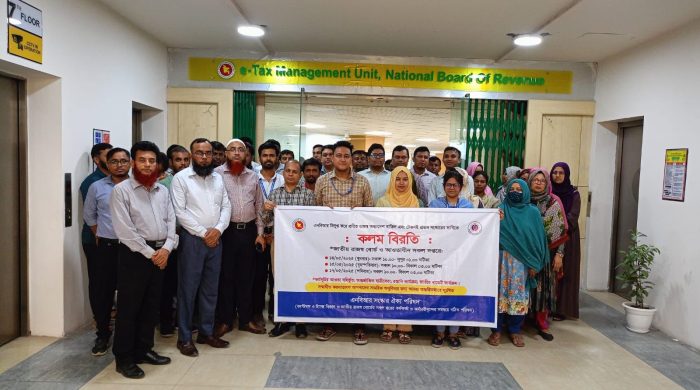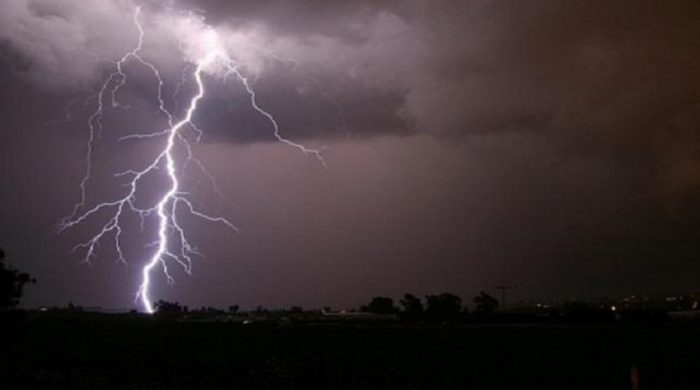How climate change worsens avalanches

- Update Time : Saturday, June 3, 2023
- 73 Time View

IN RECENT months, numerous reports of dangerous avalanches in the Himalayas have made the headlines. These sudden releases of snow, ice and rocks sweep down mountainsides, burying any people, animals and infrastructure in their path.
In the Indian Himalayas alone, at least 120 people have been killed by avalanches over the last two years. In April 2023, three sherpas were buried in a crevasse by an avalanche on Mount Everest.
The Himalayas contain the third-largest accumulation of ice and snow on Earth, after the two poles. The region is also warming faster than the rest of the world, raising questions about what climate change — with snow lines retreating and glaciers melting — might mean for the frequency and destructiveness of avalanches across the 2,500-kilometre Himalayan range.
Avalanches becoming more frequent?
AISHA Khan, chief executive of the Pakistan-based Mountain and Glacier Protection Organisation and the Civil Society Coalition for Climate Change, says that an increase in avalanche activity is an ‘expected consequence’ of climate change in the Himalayas. In 2018, scientists from the University of Geneva in Switzerland published research that reconstructed avalanches over the last 150 years in the Indian Himalayan state of Himachal Pradesh, using indications gathered from tree rings. They found that snow avalanches occurred much more frequently in the last 50 years compared with the previous 100, and concluded that the number of avalanches in the western Indian Himalayas has been rising since the 1970s.
Previously, they found, avalanches were rare in the region, with ‘virtually no activity between the 1940s and 1960s’. In the 1970s and 1990s, by contrast, they noted ‘very high activity’.
‘Our study has shown a recent increase in the number of snow avalanches, which matches with an increase of temperature in late winter/early spring,’ says Juan Antonio Ballesteros-Cánovas, a senior lecturer at the University of Geneva’s Institute for Environmental Sciences and lead author of the study.
Wetter snow leads to more avalanches
SCIENTISTS have established that temperature and precipitation patterns in the Hindu Kush Himalayas have changed significantly over the past 100 years. With its steep mountain slopes, the Himalayan region is naturally avalanche-prone, Khan points out. But warmer temperatures are changing the structure of the snowpack — the layers of compressed snow that cover much of the rock in the Himalayas’ higher reaches — and destabilising slopes, she says.
Warmer temperatures mean that rain, rather than snow, is falling more often than in the past. ‘Most precipitation now falls in the form of rain, reducing the snowfall on the relatively lower reaches,’ says Sourav Laha, a glacio-hydrologist at India’s National Centre for Polar and Ocean Research. Laha says that precipitation — whether new snow or rain — can increase the risk of an avalanche.
Rain falling on snow is a common trigger of wet-snow avalanches. As the water percolates through the snowpack, it can weaken its structure, causing melting, changing the shape and texture of grains of snow, and reducing the friction that holds the grains together. Rainwater can also accumulate and alter the distribution of weight in certain areas of the snowpack, creating new stresses. These changes can result in less stable snow cover — and therefore make avalanches more likely.
On the steep slopes of the Himalayas, ‘the transformation of dry snowpacks into wet snowpacks is decisive for releasing snow avalanches,’ Laha says.
Himalayan avalanches more dangerous?
IN A 2021 paper, experts from Italy, Switzerland and the United States wrote that ‘with a wetter and warmer snow climate, consequences of burial [by an avalanche] may become more severe’. The paper says that avalanches may cause more traumatic injuries in a warmer climate, since thinner snow cover offers less protection from underlying rock, and that people buried in wetter, denser snow are at higher risk of suffocating. ‘Asphyxia and trauma as causes of avalanche death may therefore increase,’ they conclude.
The same paper notes that unlike the European Alps, in the Himalayas there are few protective structures in place like snow fences, barriers and snow-sheds to reduce the impact of avalanches on infrastructure, leaving the local population at risk.
‘This is compounded by the fact that in most Himalayan countries, the population in mountainous areas is on average poorer than in other regions. This economic marginalisation often means mountain communities are overlooked in governance — with little opportunity to input into policy, infrastructure planning, or disaster preparedness.
According to Juan Antonio Ballesteros-Cánovas from the University of Geneva, avalanches are becoming more dangerous in the Himalayas, as warming leads to the degradation of permafrost. Data from the International Centre for Integrated Mountain Development’s Avalanches in High Mountain Asia database shows that deadly avalanches have become more common, particularly in the past 20 years.
Avalanches are also a major trigger of another growing risk in the Himalayas: glacial lake outburst floods. These occur when melt-water that has accumulated at the snout of a glacier breaches the dam holding it back, thanks to a trigger such as an earthquake or avalanche. Analysis of 30 GLOFs that occurred in the Hindu Kush Himalayas since 1930, conducted by scientists at the University of East London in the UK, found that 23 per cent were started by avalanches.
Less snow, more wind and retreating glaciers
JAVIER Martin-Torres, professor of planetary sciences at the University of Aberdeen in the UK, explains that when snow accumulates to form snowpack in the Himalayas, this creates a natural ‘glue’ that prevents fresh snow from sliding off the mountain slopes in an avalanche. A decrease in snow in the region has reduced this ‘glue’, he says, ‘leading to an overall increase in the frequency of avalanches’.
Martin-Torres adds that the melting and retreating of glaciers in the Himalayas, brought on by the region’s warmer temperatures, can lead to avalanches. As a glacier melts, water accumulates as its base and this can cause ice to slide, raising the likelihood of an avalanche being triggered, says Martin-Torres.
Climate change is also altering wind in the Himalayas, another factor in avalanche risk, he says. ‘The rising temperatures have caused increased wind speeds in the region, allowing the snow to become even more mobile and susceptible to gaining mass and moving quickly in an avalanche,’ Martin-Torres explains.
Western Himalayas at risk
ACCORDING to Aisha Khan, while snow cover in the high reaches of the Himalayas means there is a risk of avalanches across the mountain range, ‘the regions in the Western Himalayan belt, including Himachal Pradesh and Uttarakhand [states of India] are more prone.’
More than 1,100 square kilometres of snow cover in the Western Himalayas (north-western India and northern Pakistan) has been classified as ‘avalanche sites’ by Indian government research centre the Snow and Avalanche Study Establishment, and an average of 49 people are killed by snow avalanches in the region every year.
Reducing risk of avalanches
SOURAV Laha from India’s National Centre for Polar and Ocean Research says it is important to identify potential avalanche hotspots across the Himalayas, and carry out risk assessments before developing infrastructure. He adds that environmental impact assessments for projects near glaciers should thoroughly scrutinise the projects’ disaster-mitigation measures.
More generally, measures to slow and control avalanches that could be deployed more broadly in the Himalayas include:
— Catch dams, which slow down avalanches
— Diversion dams, which deflect avalanches away from where they could pose a risk to life and property
— Earthen mounds, which create friction to slow down avalanches on relatively flat slopes
— Planting trees, which can slow avalanches, cushioning their impact.
The Third Pole, May 29. Humaira Nabi is an independent journalist based in Kashmir.

















